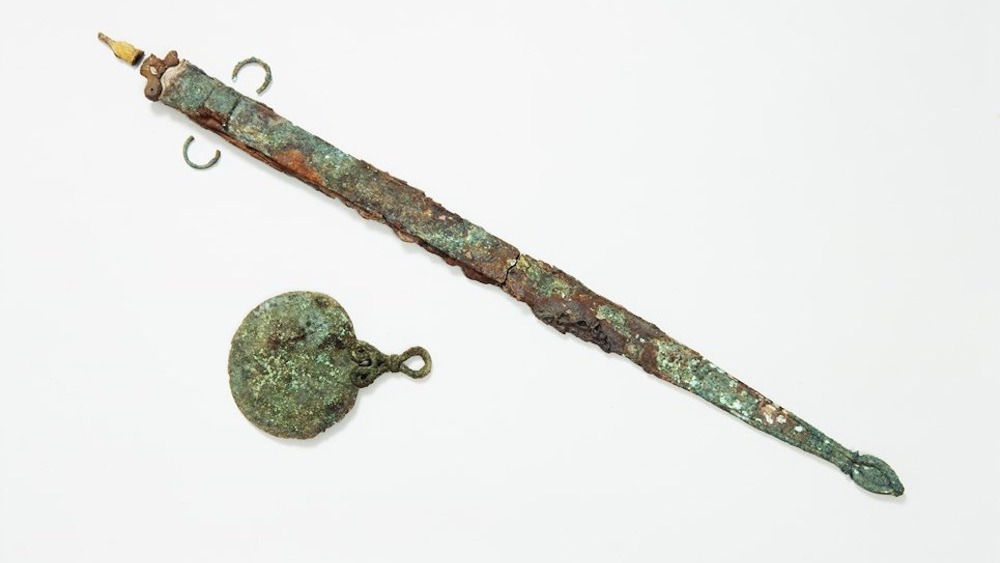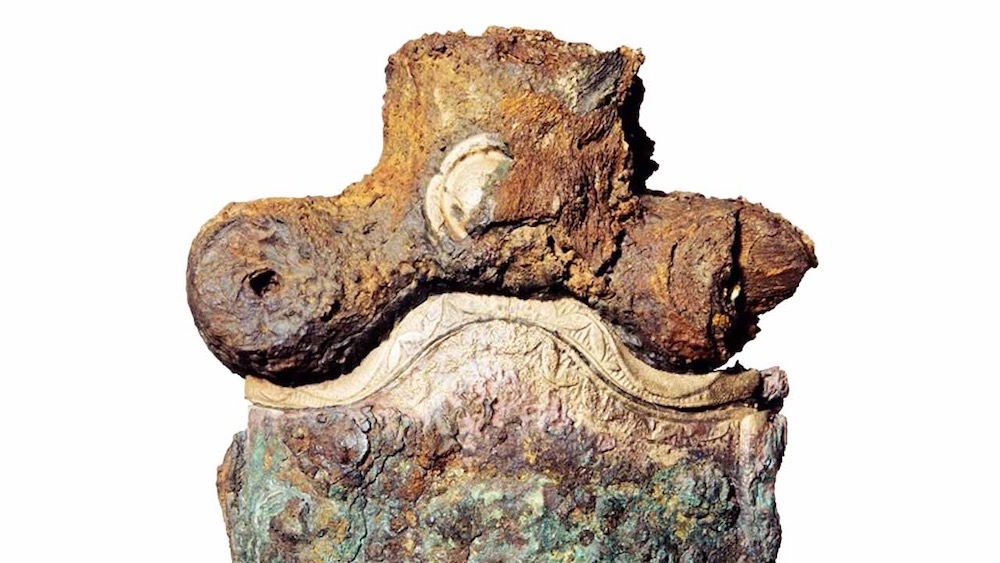Iron Age warrior woman was buried with a sword and a mirror
Archaeologists in England used a tooth enamel analysis to confirm that a 2,000-year-old burial contained a female warrior.

A 2,000-year-old burial unearthed in England has stumped archaeologists since its discovery more than 20 years ago; interred alongside the human remains were a sword, a weapon associated with male warriors, but also a mirror, an object frequently buried with women.
Now, a new tooth analysis of the remains reveals that the person buried at the site, located on Isles of Scilly, an archipelago off of England's southwestern coast, was an Iron Age woman, likely a warrior, according to a study published July 27 in the Journal of Archaeological Science: Reports.
Archaeologists originally found the mysterious, first-century-B.C. burial site in 1999. Because the cist, or stone-lined grave, contained an iron sword, researchers at the time concluded that the person buried there was likely a man. However, since the grave also contained a bronze mirror equipped with a handle, experts were perplexed about the individual's sex, according to a statement. The burial also contained a metal brooch, spiral ring and the remains of a shield.
During the Iron Age, mirrors held an important significance and had multiple uses. If the individual was a female warrior, perhaps she used the mirror to communicate, reflecting light off its surface to signal to fellow warriors to attack, the researchers wrote. The reflective objects also had ritualistic purposes and may have been used to communicate with the supernatural world to ensure a raid's success or for the safe return of warriors going into battle, according to the study.
Related: Highest-ranking person in Copper Age Spain was a woman, not a man, genetic analysis shows
"Our findings offer an exciting opportunity to re-interpret this important burial," study co-author Sarah Stark, a human skeletal biologist at Historic England, an organization that preserves historic sites in the country, said in the statement. "They provide evidence of a leading role for a woman in warfare on Iron Age Scilly."
The buried skeleton was poorly preserved and the DNA within had deteriorated, so to determine the sex, scientists turned to the individual's teeth. The person's tooth enamel contained a form of the amelogenin peptide — a short chain of amino acids key to enamel formation — that's encoded by a gene found only on the X chromosome. They found no trace of the Y-chromosome version of amelogenin, suggesting that the individual did not have a Y chromosome.
Get the world’s most fascinating discoveries delivered straight to your inbox.
As most females carry two X chromosomes and no Y, the team was able to conclude with 96% probability that the warrior was a woman, according to the study.
"Although we can never know completely about the symbolism of objects found in graves, the combination of a sword and a mirror suggests this woman had high status within her community and may have played a commanding role in local warfare, organizing or leading raids on rival groups," Stark said. "This could suggest that female involvement in raiding and other types of violence was more common in Iron Age society than we've previously thought."
The sword and mirror have been housed at the Isles of Scilly Museum since 2002, according to BBC News.
Jennifer Nalewicki is former Live Science staff writer and Salt Lake City-based journalist whose work has been featured in The New York Times, Smithsonian Magazine, Scientific American, Popular Mechanics and more. She covers several science topics from planet Earth to paleontology and archaeology to health and culture. Prior to freelancing, Jennifer held an Editor role at Time Inc. Jennifer has a bachelor's degree in Journalism from The University of Texas at Austin.



